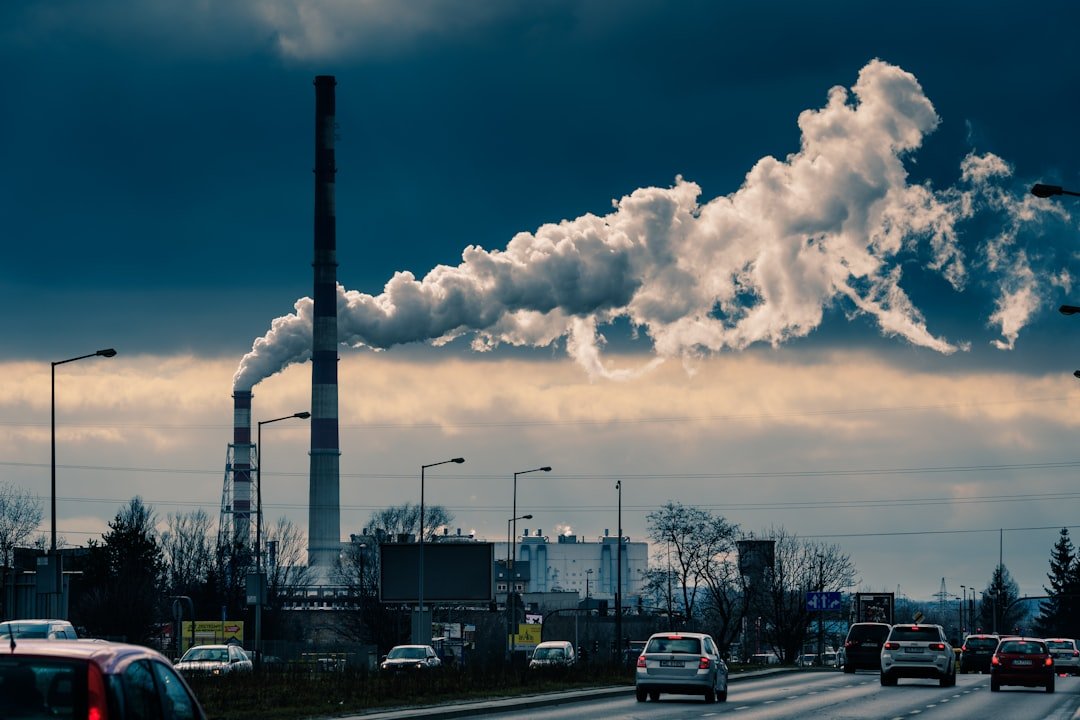A Complete Guide to Understanding PM 2.5 Pollution PM 2.5 pollution is defined as particulate matter with a diameter of 2 nanometers or less. Only an electron microscope can see these minuscule particles, which have the ability to enter the bloodstream and penetrate deep into the lungs. Soot, dust, metals, and liquid droplets are among the organic and inorganic materials that make up PM 2.5, a major contributor to air pollution. These particles pose a constant threat to air quality because of their tiny size, which allows them to float in the atmosphere for long periods of time.
Key Takeaways
- PM 2.5 pollution refers to fine particulate matter in the air that is 2.5 micrometers or smaller in size, which can be harmful to human health and the environment.
- Health effects of PM 2.5 pollution include respiratory and cardiovascular issues, as well as an increased risk of lung cancer and other health problems.
- Sources of PM 2.5 pollution include vehicle emissions, industrial processes, and natural sources such as wildfires and dust storms.
- PM 2.5 pollution has environmental impacts such as reduced visibility, acid rain, and damage to ecosystems and wildlife.
- Vulnerable populations at risk from PM 2.5 pollution include children, the elderly, and individuals with pre-existing health conditions.
- Steps to reduce exposure to PM 2.5 pollution include using air purifiers, wearing masks, and avoiding outdoor activities during high pollution days.
- Government regulations and policies aim to limit PM 2.5 pollution through emissions standards, vehicle inspections, and clean air initiatives.
- Global efforts to address PM 2.5 pollution involve international agreements, research collaborations, and initiatives to reduce emissions from various sources.
PM 2.5 can come from a variety of natural and man-made (anthropogenic) sources. In addition to human activities like industrial processes, vehicle emissions, and burning fossil fuels, natural sources of PM 2.5 include dust storms, wildfires, and volcanic eruptions. The intricacy of PM 2.5 pollution is found in both its sources and composition, which can differ substantially based on location, climate, and seasonal variations. Effective strategies to reduce the impact of PM 2point 5 require an understanding of what it is and how it behaves in the environment.
PM 2.5 pollution has significant and wide-ranging negative health effects on millions of people worldwide. Numerous heart and lung conditions have been connected to exposure to these tiny particles. Research has indicated that breathing in PM 2point-5 can cause lung inflammation, which can exacerbate asthma & chronic obstructive pulmonary disease (COPD). Also, prolonged exposure has been linked to a higher risk of strokes, heart attacks, and even early death.
PM 2.5 may have neurological effects in addition to respiratory and cardiovascular problems, according to new research. There may be a connection between fine particulate matter exposure and neurodegenerative illnesses like Alzheimer’s or cognitive decline, according to certain research. Concerns regarding PM 2.5’s effects on brain health are raised by its capacity to cross the blood-brain barrier, especially in susceptible groups like the elderly and people with underlying medical conditions.
| Health Impact | Statistics |
|---|---|
| Respiratory Diseases | Linked to 29% of all deaths and diseases from lung cancer |
| Cardiovascular Diseases | Linked to 25% of all deaths and diseases from heart attack |
| Reduced Life Expectancy | Estimated to reduce life expectancy by 1-2 years in highly polluted areas |
| Increased Risk of Stroke | Linked to 34% increase in risk of stroke |
PM 2.5 pollution has numerous negative health effects, which emphasize how urgently effective policy changes & public awareness campaigns are needed. There are many different sources of PM 2.5 pollution, which can be divided into primary and secondary sources. PM 2.5 is produced by chemical reactions from other pollutants, whereas primary sources release particulate matter directly into the atmosphere. Soot and other particulates are released into the air by vehicles such as cars, trucks, and buses, making them major primary sources. PM 2point 5 levels are also greatly influenced by industrial processes, especially those that involve combustion.
Secondary sources, on the other hand, come from intricate atmospheric reactions involving gases like nitrogen oxides (NOx) & sulfur dioxide (SO2). Fine particulate matter can be created when these gases react with other substances in the atmosphere. Also, burning coal or wood stoves for home heating can emit large amounts of PM 2.5 into the atmosphere, particularly during the winter months when heating needs rise.
Developing focused interventions to lower PM 2.5 emissions requires an understanding of these sources. Beyond just harming human health, PM 2.5 pollution has an impact on ecosystems and climate systems. Plant growth may be hampered by nutrient imbalances caused by fine particulate matter that settles on soil and water bodies.
By obstructing sunlight, PM 2.5 can impair photosynthesis when it is deposited on leaves, which will ultimately affect biodiversity and agricultural productivity. Also, PM 2.5 affects atmospheric conditions, which contributes to climate change. These particles have the ability to either reflect or absorb sunlight, which can alter local weather patterns and cause temperature variations.
Because of infrastructure and human activity, cities can become noticeably warmer than their rural surroundings, a phenomenon known as the urban heat island effect, which can be made worse by high PM 2.5 levels. The interaction of PM 2.5 pollution with environmental systems emphasizes the necessity of all-encompassing approaches that take ecological health and air quality into consideration. Due to a number of factors, including age, pre-existing medical conditions, and socioeconomic status, some populations are more susceptible to the negative effects of PM 2.5 pollution than others.
Because of the ongoing development of their respiratory systems, children are particularly vulnerable to respiratory diseases brought on by exposure to fine particulate matter. Also, poor air quality can make pre-existing health conditions worse for older adults. The proximity of low-income communities to industrial sites or high-traffic areas where emissions are common often results in a disproportionate burden of PM 2.5 pollution. These communities’ susceptibility may be increased by the fact that they lack access to healthcare resources or reside in areas that do not promote healthy living conditions.
Implementing equitable public health interventions targeted at lowering exposure to PM 2.5 pollution requires an understanding of these disparities. Changing policies, community projects, & individual behavior are all necessary components of a multifaceted strategy to reduce exposure to PM 2.5 pollution. Personal actions that people can take include using indoor air purifiers, staying indoors on days with high pollution levels, and, if needed, donning masks that filter out fine particles.
Overall exposure can also be decreased by preserving good indoor air quality through adequate ventilation and limiting the use of products that release volatile organic compounds (VOCs). Addressing PM 2.5 pollution also requires community initiatives. By encouraging the use of electric vehicles or offering incentives for public transportation, local governments can put policies into place that lower vehicle emissions. By increasing air quality through the natural filtration processes that trees and plants provide, urban planning that places a high priority on green spaces can also help reduce air pollution. When taken as a whole, these activities make the surroundings healthier for every inhabitant.
Local, national, and international PM 2.5 pollution management is greatly aided by government regulations. Particulate matter concentrations in the atmosphere are subject to allowable limits set by air quality standards that have been established in numerous nations. In the US, regulatory agencies like the Environmental Protection Agency (EPA) keep an eye on data related to air quality & use a variety of tactics to ensure that these standards are followed. Effective PM 2.5 pollution management requires policies targeted at lowering emissions from major sources. Vehicle emissions standards, industrial discharge caps, & incentives for cleaner energy sources like solar or wind power are all included in this.
Citizens can also be educated by public awareness campaigns about the significance of lowering their carbon footprint & supporting local cleaner air policies. As people’s awareness of PM 2.5 pollution’s negative health effects has grown in recent years, global efforts to address it have accelerated. Guidelines for air quality standards have been established by international organizations like the World Health Organization (WHO) in order to safeguard the public’s health from the risks that fine particulate matter poses. These recommendations provide a framework for nations to create laws that are specific to their own circumstances.
Addressing transboundary air pollution issues that lead to elevated PM 2.5 levels in some areas also requires cross-border cooperation among nations. In order to successfully reduce emissions from common sources, agreements like the Convention on Long-Range Transboundary Air Pollution (CLRTAP) help nations work together. International cooperation and the exchange of best practices for managing air quality can result in major advancements in the global reduction of PM 2.5 pollution levels.
In conclusion, protecting the environment from the harmful effects of PM 2.5 pollution and ensuring public health are both dependent on an understanding of this pollution. It is possible to reduce exposure to this ubiquitous pollutant and strive toward cleaner air for future generations by coordinating efforts at the individual, community, governmental, and international levels.



